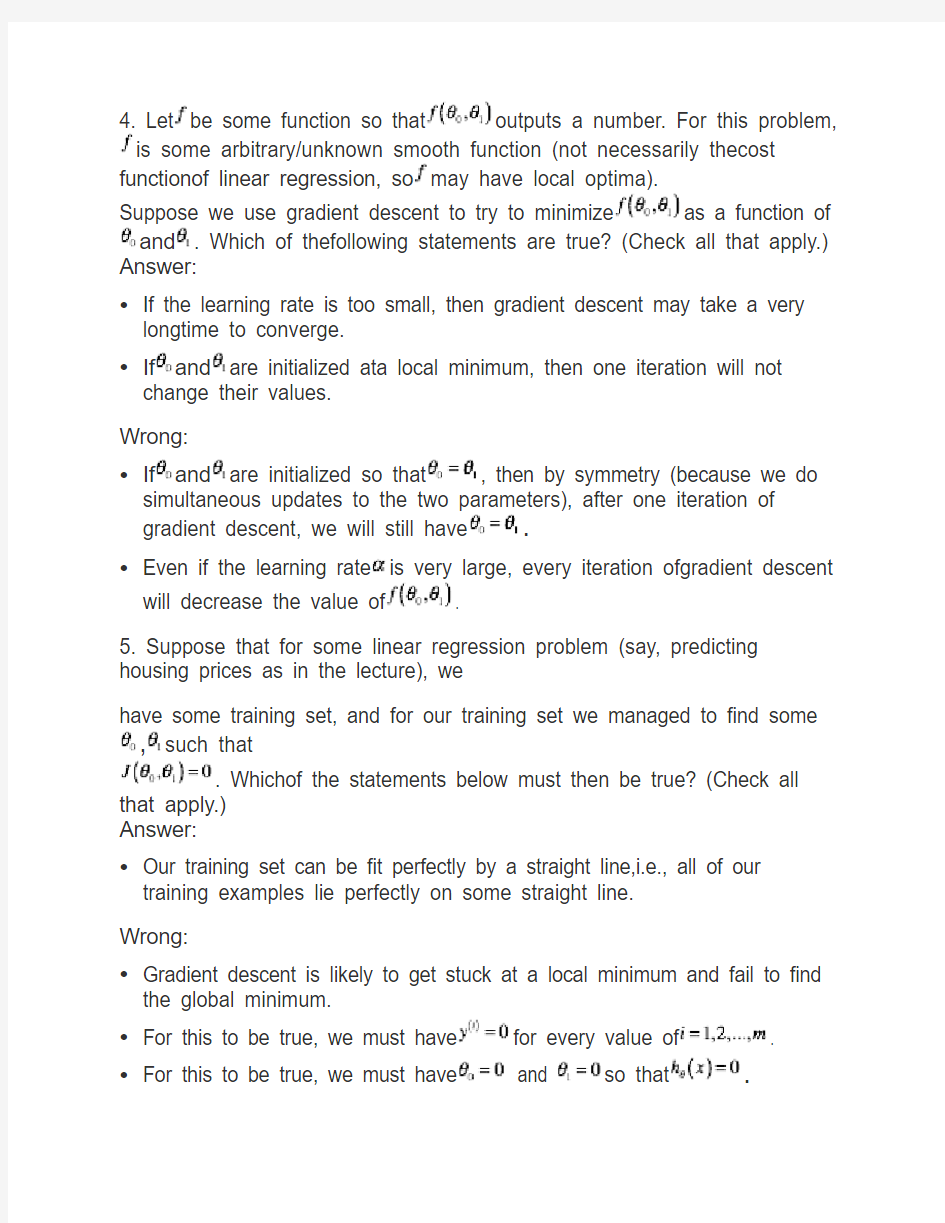Linear Regression with One Variable


Linear Regression with One Variable
1. Consider the problem of predicting how well a student does in her second year of college/university, given how well they did in their first year. Specifically, let x be equal to the number of "A" grades (including A-. A and A+ grades) that a student receives in their first year of college (freshmen year). We would like to predict the value of y, which we define as the number of "A" grades they get in their second year (sophomore year). Questions 1 through 4 will use the following training set of a small sample of different students' performances. Here each row is one training example. Recall that in linear regression, our hypothesis is, and we use to denote the number of training examples.
For the training set given above, what is the value ofm? In the box below, please enter your answer (which should be a number between 0 and 10). Answer: 4
2. For this question, continue to assume that we areusing the training setgiven above. Recall our definition of the cost function was
.
What is?In the box below,
please enter your answer (use decimals instead of fractions if necessary, e.g., 1.5).
Answer: 0.5
3. Suppose we set, . What is?
Answer: 1
4. Let be some function so that outputs a number. For this problem, is some arbitrary/unknown smooth function (not necessarily thecost functionof linear regression, so may have local optima).
Suppose we use gradient descent to try to minimize as a function of and. Which of thefollowing statements are true? (Check all that apply.) Answer:
?If the learning rate is too small, then gradient descent may take a very longtime to converge.
?If and are initialized ata local minimum, then one iteration will not change their values.
Wrong:
?If and are initialized so that, then by symmetry (because we do simultaneous updates to the two parameters), after one iteration of gradient descent, we will still have.
?Even if the learning rate is very large, every iteration ofgradient descent will decrease the value of.
5. Suppose that for some linear regression problem (say, predicting housing prices as in the lecture), we
have some training set, and for our training set we managed to find some ,such that
. Whichof the statements below must then be true? (Check all that apply.)
Answer:
?Our training set can be fit perfectly by a straight line,i.e., all of our training examples lie perfectly on some straight line.
Wrong:
?Gradient descent is likely to get stuck at a local minimum and fail to find the global minimum.
?For this to be true, we must have for every value of. ?For this to be true, we must have and so that.
